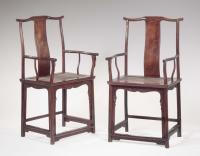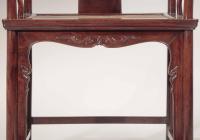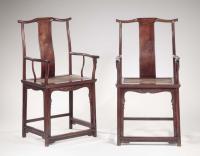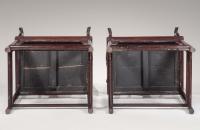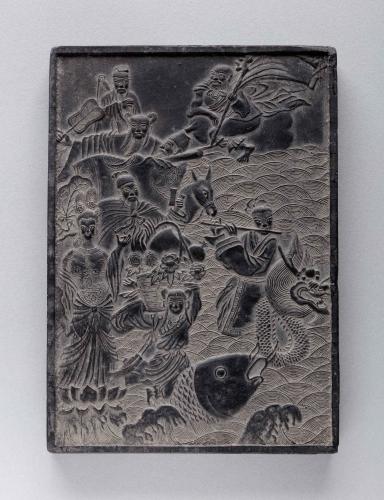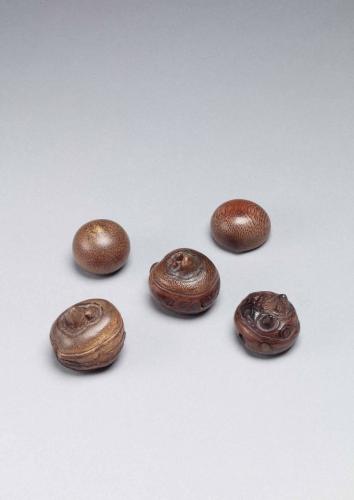

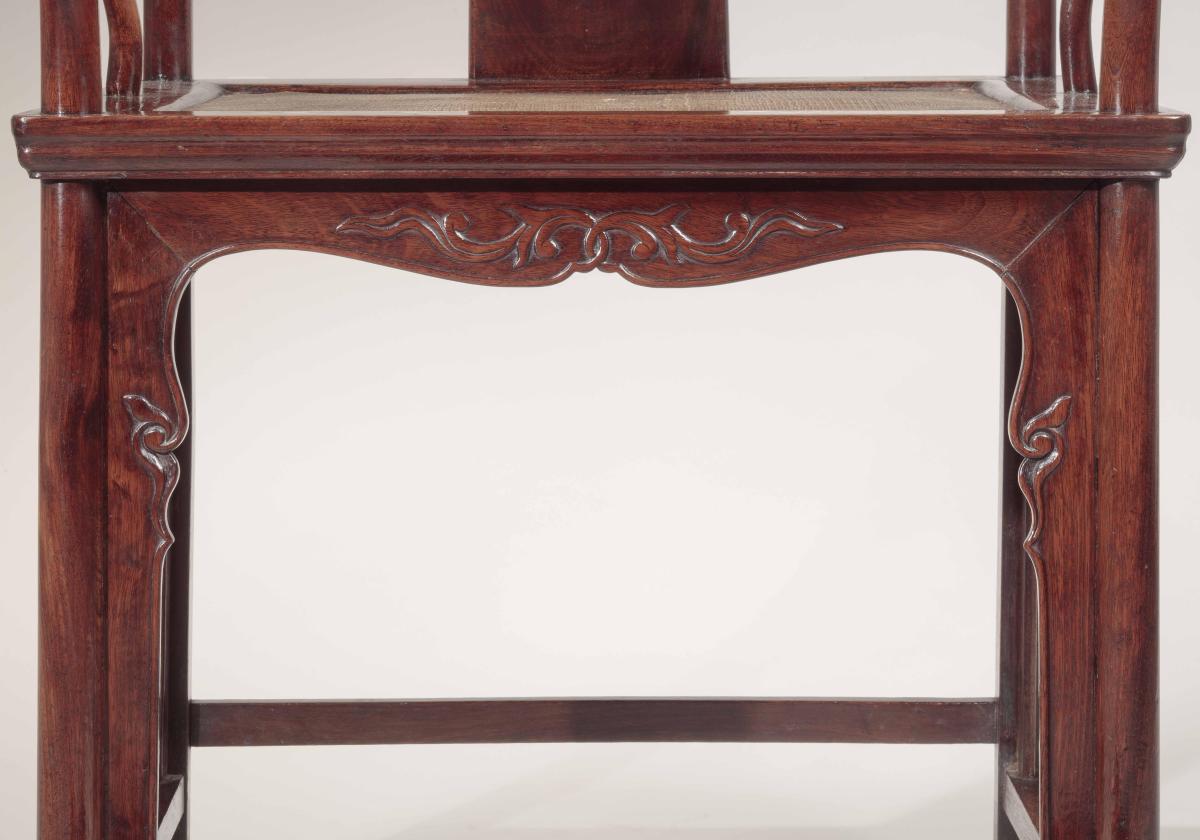

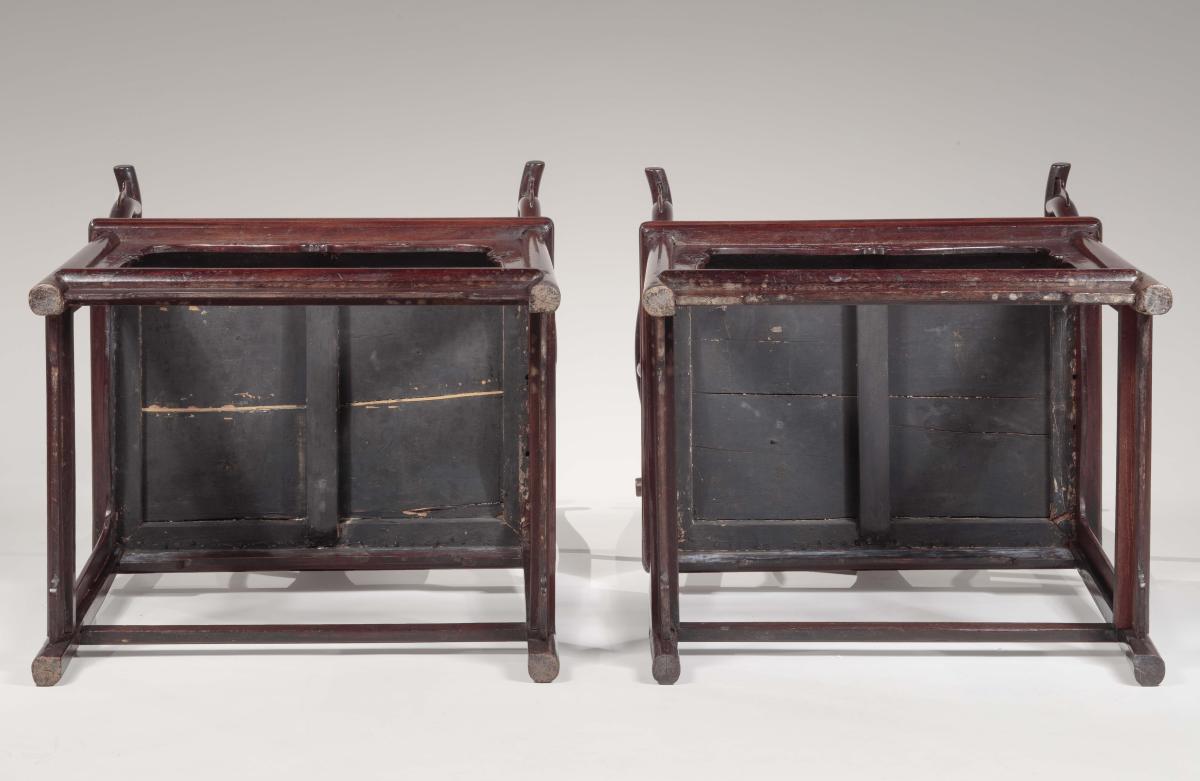
Price on application
This object is eligible for a Certificate of BADA Provenance
The BADA Standard
- Since 1918, BADA has been the leading association for the antiques and fine art trade
- Members are elected for their knowledge, integrity and quality of stock
- Our clients are protected by BADA’s code of conduct
- Our dealers’ membership is reviewed and renewed annually
- Bada.org is a non-profit site: clients deal directly with members and they pay no hidden fees
Pair of Yokeback Armchairs.
China, Qing dynasty, 17th century.
Tielimu ('strength of iron' wood); mat seats.
A pair of tielimu yokeback armchairs, the well-shaped yoke, flattened in the middle and terminating in everted ‘cut off’ ends. The backward sloping rear posts are tenoned into the underside of the yoke and pass through the seat rail to form the back legs. The flat S-shaped splat is tenoned into the underside of the yoke and into the back rail of the seat frame. The S-shaped arms are tenoned into the back posts and are supported on slightly shaped front posts that continue through the seat frame to form the front legs. In each case the leg is of square section on the inside to support the seat frame. There are S-shaped tapering braces in the centre of each arm. The rectangular seat frame is typically constructed with mitred corners and exposed tenons in the short rails now with a hard matting seat, having been drilled for soft matting construction with one transverse stretcher, replaced. This matting might well be original, the conversion from soft to hard matting being made in China in the 1930’s. The outside of the seat frame has a double reducing convex moulding with a square shoulder beneath. The front apron is mitred and half-lapped and carved with a raised beaded edge with a central scrolling leafy tendril, the upright aprons have a ‘hip’ with another foliate leaf motif. The aprons are butt-jointed to the underside of the seat frame and tongue and grooved into the inside faces of the legs. The design and construction is repeated to the side aprons but without any foliate decoration, the back apron is of a simple eared form, made in one piece. The rear stretcher of oval section is through tenoned into the legs as are the side stretchers and front footrest, in descending heights. Both the front footrest and side stretchers have short eared aprons beneath them, tongue and grooved into the legs and butt jointed to their respective stretchers.
Chinese, 17th century.
Provenance:
Acquired from a US collector in China in the first quarter of the twentieth century.
Thence by descent when acquired in 2022.
Dimensions
H107.6 x W57.1 x D50.8 cmStock number
0922-01The BADA Standard
- Since 1918, BADA has been the leading association for the antiques and fine art trade
- Members are elected for their knowledge, integrity and quality of stock
- Our clients are protected by BADA’s code of conduct
- Our dealers’ membership is reviewed and renewed annually
- Bada.org is a non-profit site: clients deal directly with members and they pay no hidden fees


